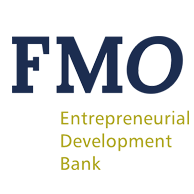


Collaboration between investors and NGOs, coupled with a strong local presence in developing countries, creates unique opportunities for project identification and generation, as highlighted by the evaluation of the DFCD. However, coherence can be further improved.
The Dutch government commissions an evaluation of the public programs managed by FMO every five years. This is required under its general policies on evaluation and is aimed at both accountability and learning.
In 2023, the Dutch Ministry of Foreign Affairs commissioned SEO Amsterdam Economics, a research organization, to conduct an evaluation of the Dutch Fund for Climate and Development (DFCD), managed by a consortium of FMO, CFM, WWF and SNV. The purpose of this exercise was to obtain lessons learned for steering the fund halfway through the initial investment period (2019-2023). In addition, the evaluation would provide useful information on the status of the DFCD for the Ministry of Foreign Affairs, as initiator and funder of this initiative. The evaluation team assessed the fund through an in-depth review of DFCD procedures and processes, an in-depth analysis of climate finance architecture, a portfolio analysis and a number of in-depth and light case studies.
The objective of the Dutch Fund for Climate and Development (DFCD) is to promote climate-resilient economic growth. FMO leads the management of the DFCD, in a unique collaboration through a consortium with another investment manager (CFM) and two NGOs (WWF-NL and SNV). DFCD is divided into three facilities: Origination Facility (OF, managed by WWF-NL and SNV), Land Use Facility (LUF, managed by FMO) and Water Facility (WF, managed by CFM).
Collaboration efforts like these will be an ever more important model going forward. They are not easy, but evaluations like these help us to learn from action.
A key finding of the evaluation is that the DFCD projects are considered highly relevant for climate adaptation and climate mitigation, meaning mitigation/adaptation is either a significant or principal objective of each project (assessed with Rio Markers 1 or 2), and to a lesser extent for human and economic development of vulnerable groups.
The collaboration of investors with NGOs and the local presence of consortium members in developing countries create unique opportunities in project identification and generation. The report found the financial additionality of the Land Use Facility to be moderate but recognized that the DFCD structure overall ensures high financial additionality with its services provided. The provision of technical assistance (TA) makes the DFCD attractive for customers compared to other funding sources.
The DFCD as a whole met the 50% minimum target of funding going to climate adaptation. The OF was the only facility which also exceeded the 65% desired aim. Nevertheless, this can change as WF and LUF increase their number of investments.
While it is too early to evaluate the effectiveness of DFCD in terms of outcomes (e.g. lower GHG emissions), the effectiveness of graduation (i.e. projects which are originated by the Origination Facility moving on to receive funding by LUF, WF or external financiers) is still limited, in this relatively early stage of DFCD. Origination support, offered by OF and CFM’s development fund, is regarded as the main source of value added relative to other climate funds, but coherence can be further improved.
The recommendations focused on three specific themes and some general areas of improvement.
Firstly, the evaluation team recommended to “target the missing middle and take more risk”. To achieve this, the DFCD consortium should establish strategic partnerships focused on SMEs and basket funding for OF, including application of the fund-to-fund model via in-country financial intermediaries, and expand DFCD financial instruments with full serial and parallel blending.
The second theme was “Improve coordination within Consortium”. The recommendations regarding this theme were to enhance a shared understanding and language among all consortium partners, improve the monitoring and reporting system, involve LUF and WF investment officers earlier into OF project screening and scoring, establish general portfolio management guidelines and incentives, and concentrate more resources within key countries and landscapes and on projects with assessed potential for graduation.
Finally, the third theme was “Make DFCD more different from other initiatives”. The evaluation recommended to pursue more strategic partnerships between OF and other potential investors and increase blending with a wider range of hybrid financial instruments.
The consortium acknowledges the recommendations and has full confidence that the intermediate evaluation will help improve the DFCD’s operations and activities.